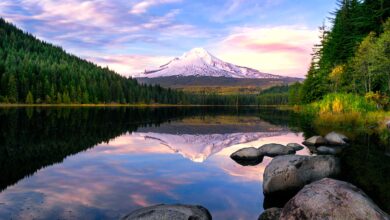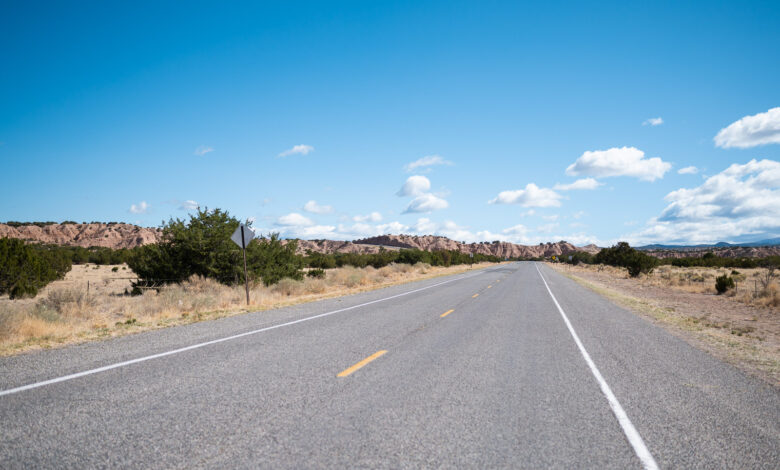
[ad_1]
Heads up: some of the links on this site are affiliate links. If you click and make a booking or purchase, I’ll make a commission (at no extra cost to you). I partner with companies I personally use and the $$ goes towards creating more awesome, free travel content.
Santa Fe is the perfect base for exploring the rest of New Mexico so I’d highly recommend you rent a car while you’re there. Popular day trips from Santa Fe include Bandelier National Monument, Jemez Springs/Spence Springs, the Turquoise Trail and of course Taos Pueblo. We took the Santa Fe to Taos High Road, stopping at a winery and also the beautiful El Santuario de Chimayó church on the way.
There are two roads you can take from Santa Fe to Taos; there’s the High Road, which takes you through the stunning Sangre de Cristo mountains, and the Low Road, which travels alongside the Rio Grande River and is generally much quicker.
I’d suggest taking the High Road to Taos on the way there, and the Low Road on your way back to Santa Fe. After a day of sightseeing you’ll be tired and will probably just want to get back to your hotel.
Here’s everything you need to plan your perfect Santa Fe to Taos day trip itinerary.
How Long Does it Take to Drive from Santa Fe to Taos?
Taos is located about 70 miles northeast of Santa Fe. The drive takes roughly 1.5 to 2 hours depending on traffic and which road you take. Obviously it will take longer if you stop at gas stations or in some of the small towns along the way.
As I mentioned before, we took the High Road there and the Low Road back. We made a couple of stops on the way there and then drove without stopping on our return.
Our journey there took about 3.5-4 hours. We spent about half an hour at the El Santuario de Chimayó church and then about 1.5 hours relaxing at the winery. It will take longer if you add in more stops.
Try to leave early in the morning so you have plenty of time to make stops and enjoy Taos. Check the sunset time as well so you can give yourself enough time to drive back before nightfall. I don’t know about you but I really don’t like driving at night!
How Long is the High Road to Taos?
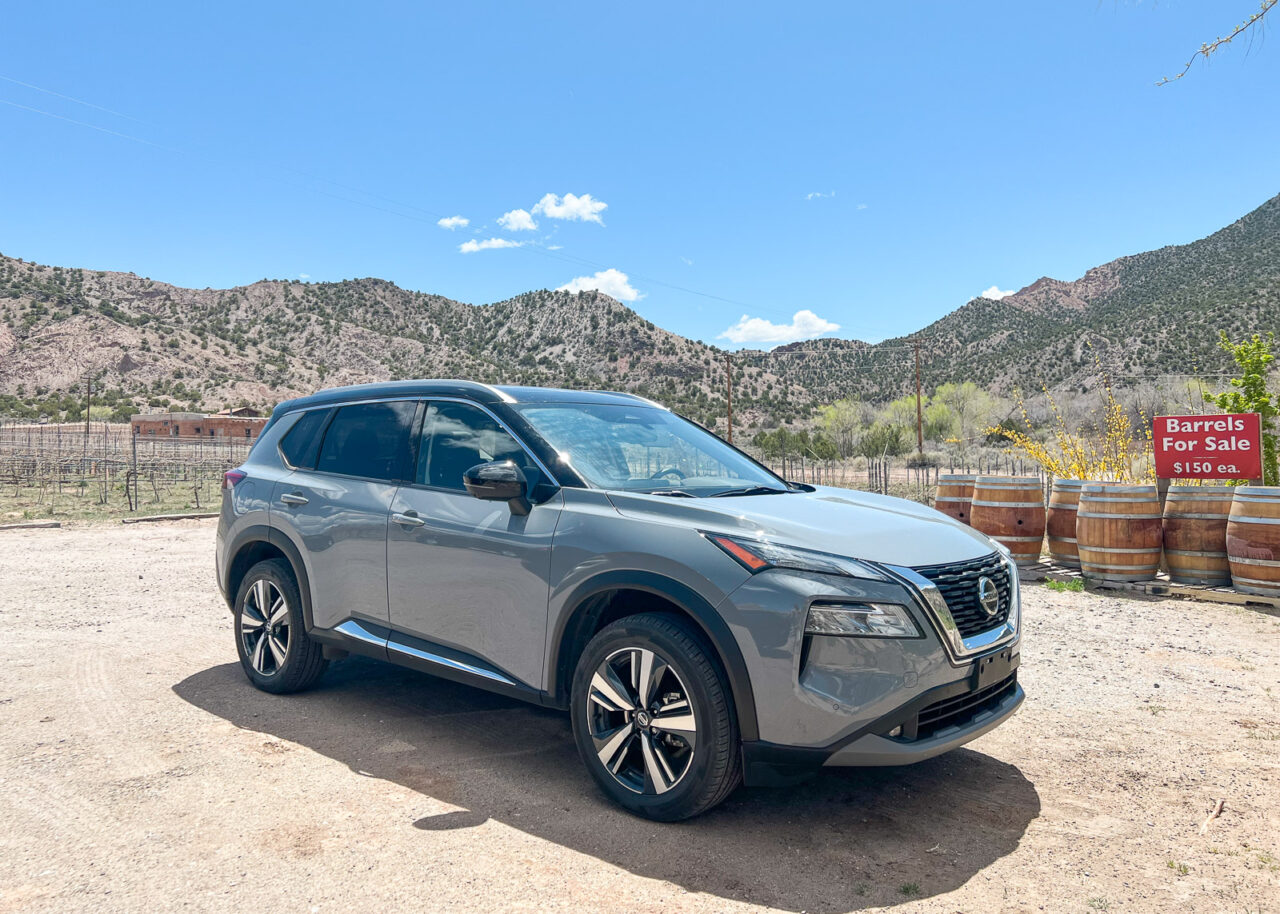
The Taos High Road is a scenic byway that stretches for 56 miles through New Mexico’s beautiful desert landscape. It takes you past various small towns and historic remains of Old Spain. After spending 3 days in Santa Fe, my friend and I were itching to get outside the city and explore the New Mexico landscape, so we chose to visit Taos for our day trip.
Santa Fe to Taos High Road Directions & Route
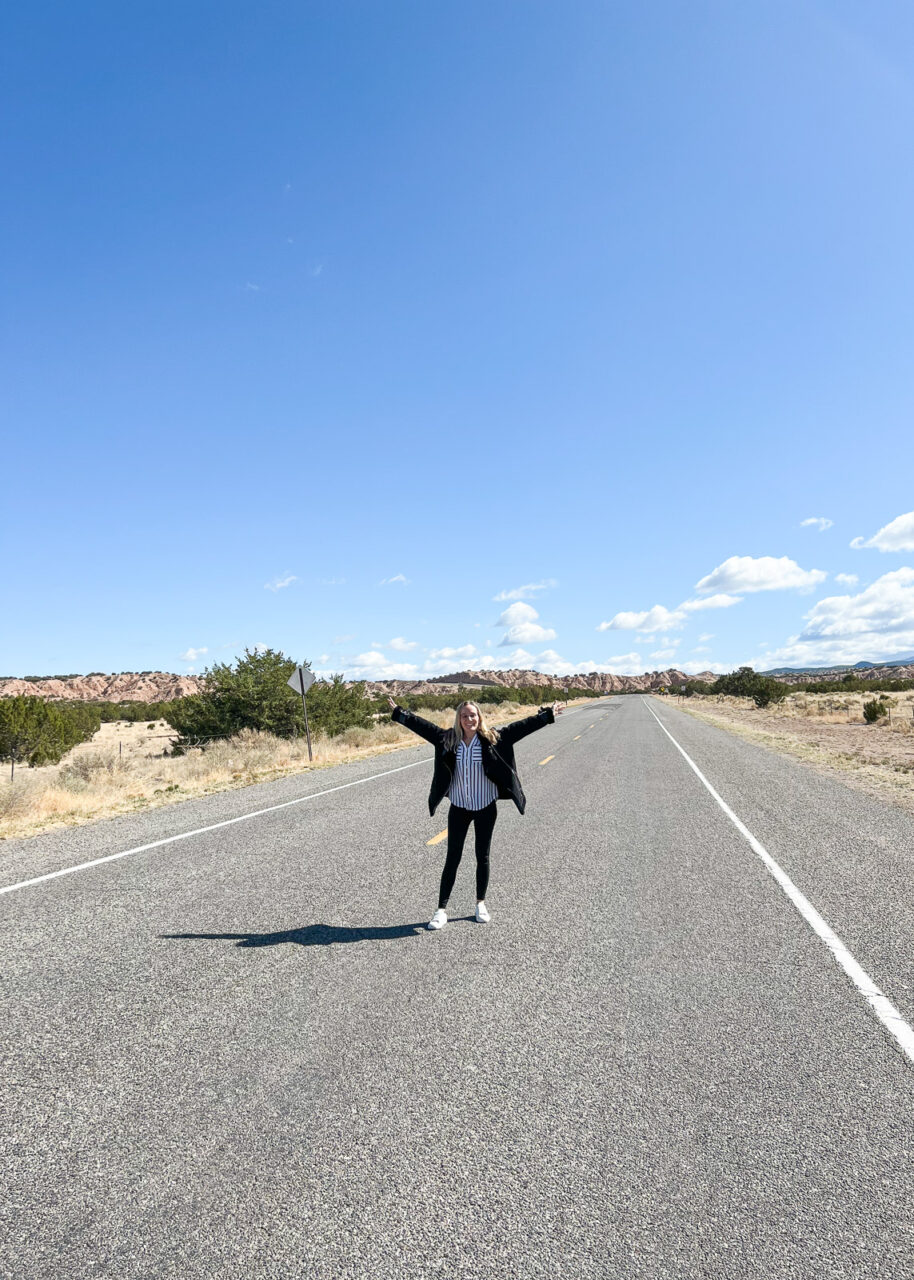
Starting in Santa Fe, Head north on US 84/285 and turn right on NM 503 where the High Road to Taos begins. Take NM 503 to NM 76 and stop in Chimayó, then continue on NM 76 through the towns of Cordova, Truchas, Ojo Sarco and Las Trampas.
At the end of NM 76 you can either take a detour and head west on NM 75 to Vivac Winery in Dixon (this is what we did), or you can continue on the Taos High Road.
To continue the Taos High Road, join NM 518 at Peñasco and drive through the Carson National Forest to US 68 at Ranchos de Taos. Eventually you’ll reach Taos, which is home to lots of restaurants, shops, and of course, Taos Pueblo.
Stops On the Santa Fe to Taos High Road
Since we were only doing a day trip to Taos, we didn’t stop at that many places along the way. We chose to stop at the Santuario de Chimayó church and then take a detour to Vivac Winery. If you have more time or you plan to stay overnight in Taos then you could stop at several towns and buildings along the way.
Start your day by grabbing coffee and breakfast at Dolina Cafe in Santa Fe. This cafe and bakery has both indoor and outdoor seating and serves modern American brunch with an eastern European twist. It also offers freshly baked pies, homemade soups, prepared foods and delicious espresso and coffee.
Chimayo
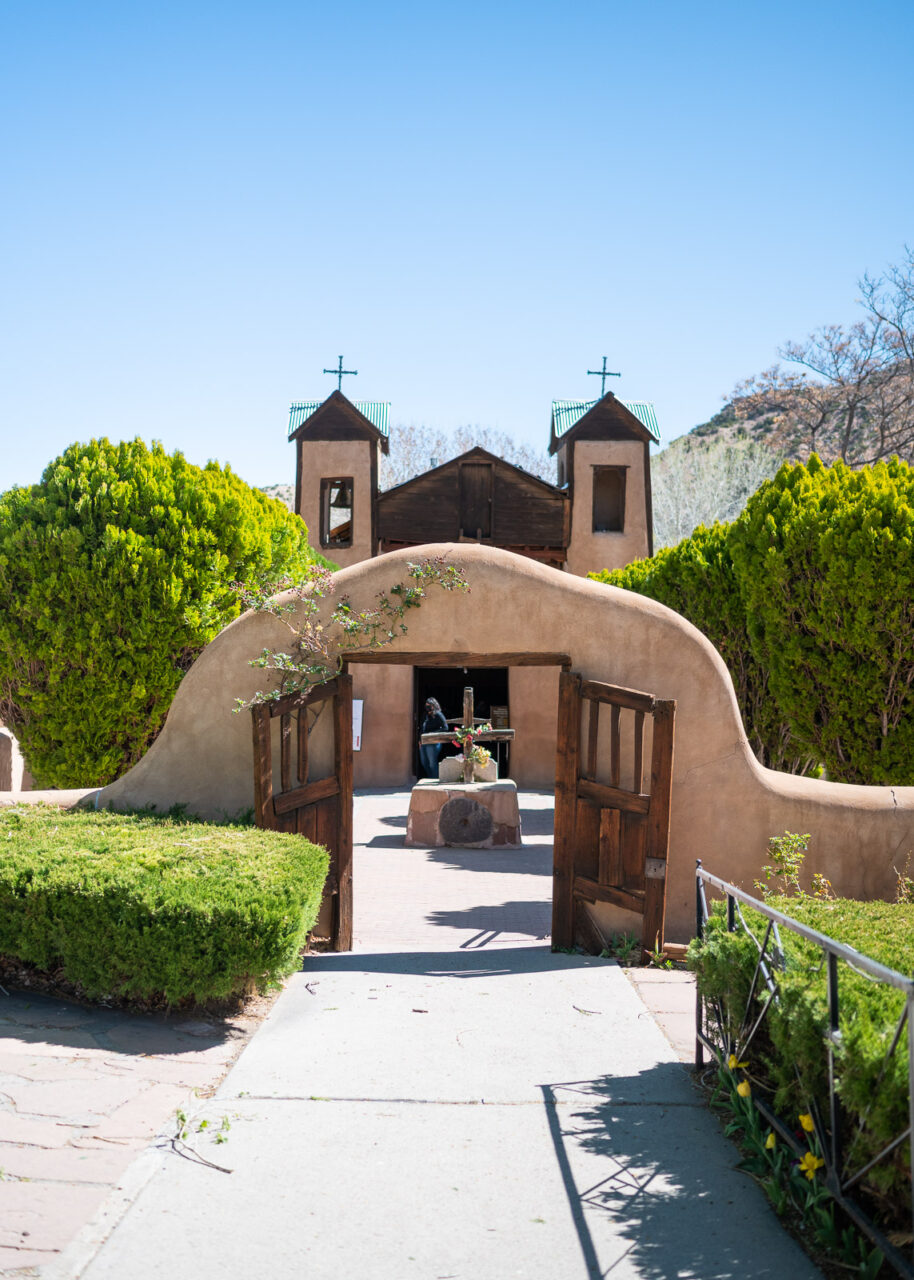
Your first stop on the Santa Fe to Taos High Road will be Chimayo, which is a traditional weaving village with galleries showcasing creations by highly-skilled weavers. The village is home to the Plaza del Cerro, which is the last surviving Spanish fortified plaza in the southwest.
The main highlight of Chimayo is Santuario de Chimayó church, which attracts around 300,000 pilgrims each year and has been dubbed the “Lourdes of America”.

This beautiful adobe church features two bell towers on either side and elegant doors that were carved by the 19th-century carpenter Pedro Domínguez. Inside the church is a small prayer room called el pocito, which contains a round hole filled with “holy dirt” that is thought to have healing powers.
Santuario de Mayo is open daily from 9am to 5pm, with mass taking place at 11am. I brought my dog along on the road trip and luckily the church is pet friendly. There’s also a gift shop and a cafe on site, should you want to grab a coffee or snack.
Vivac Winery
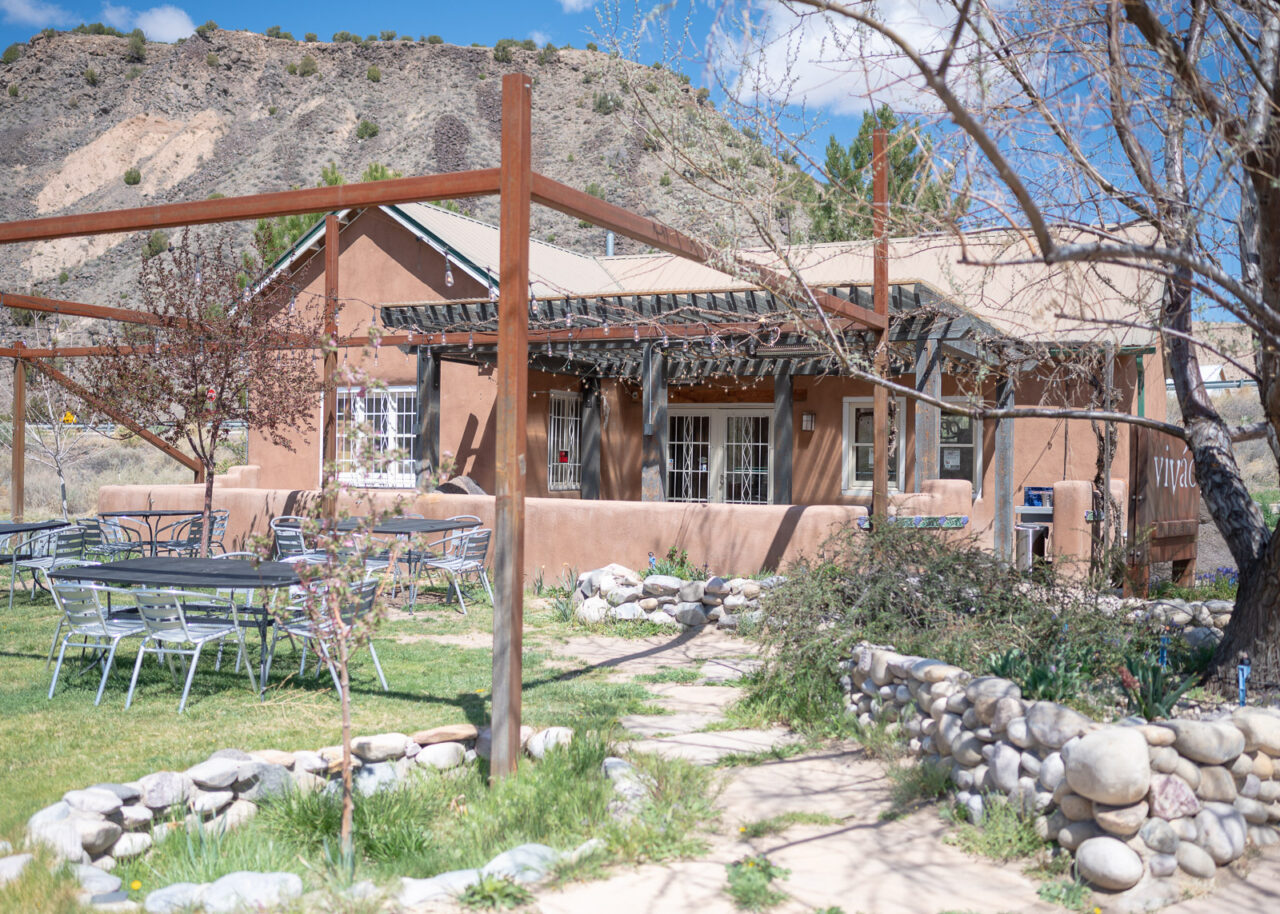
Our second stop on this Santa Fe to Taos day trip was Vivac Winery, which sits at 6,000 ft, making it one of the highest altitude wineries in the world. The winery is located on highway 68, about 25 minutes south of Taos.
The adobe tasting room was created by the winemakers themselves and is decorated with art work from contemporary New Mexico artists. Visitors can purchase tasting flights, wines by the glass and 14 beers on tap, as well as cheeses, meats and other picnic items. Chocolates, homemade Wine Nefertiti pasta and honey from the estate’s bees are also available for purchase.
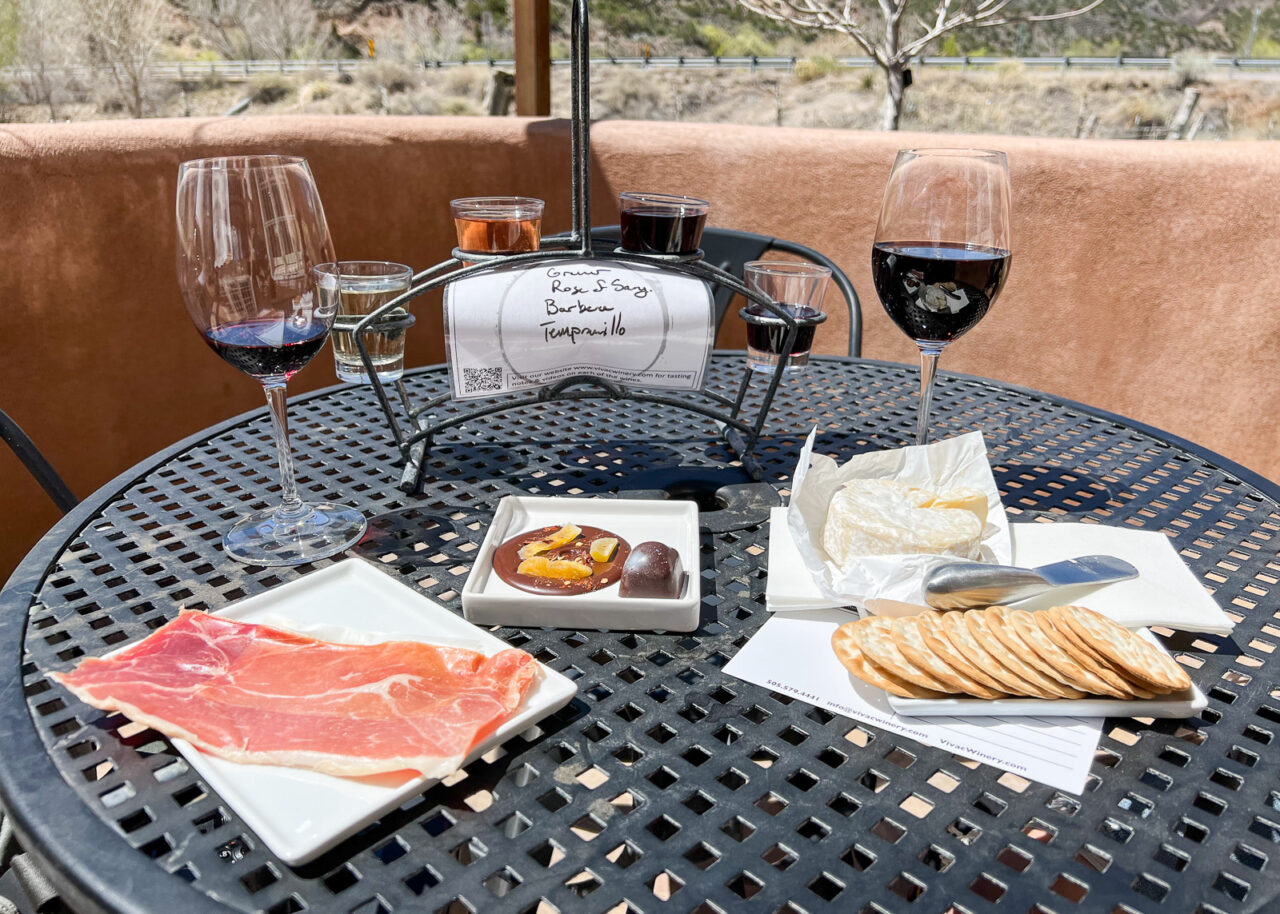
The Wine Nefertiti pasta is made with wine from VivácWinery and is created with love and care by Maddox Padberg, who started making pasta at age 8. Chocolates are made from 73.5% Venezuelan caca and supplied by Ek.chuah, a chocolatier located in New Mexico.
The scenery here is absolutely stunning so we ended up spending a good hour and a half here just chilling and enjoying the view.
Standard wine tastings cost $12 and the winery is open daily from Mon-Sun 10-6pm.
Summer hours are Mon-Fri 10-7pm, Sat 10 – 8pm, Sun 10-7pm.
If you want to continue on the Taos High Road, you can make the following stops:
Cordova
Cordova is a town known for its wood carvers and takes its name from the surname of Matías Córdova, one of the inhabitants of Pueblo Quemado located here. A highlight of Cordova is the San Antonio de Padua Church, which contains a large altar screen painted by Rafael Aragon. The church is only open for services, but if the timing’s right, you may get to peek inside.
Truchas
The town of Truchase was built on a mesa below 13,101-foot Truchas Peak – the second-highest mountain in New Mexico. Here you can see Nuestra Señora del Rosario, which was built in the early 1800s and has many well-preserved old santos (small carved, painted statues of holy figures).
Las Trampas
In Las Trampas pay a visit to San Jose de Gracia, which was built in the cruciform style with two towers. The church has been around for over 225 years and is one of New Mexico’s best-preserved examples of Spanish Colonial architecture.
Rancho de Taos
The last major stop on the High Road to Taos is Rancho de Taos, a traditional agricultural community with a historic plaza surrounded by galleries and shops. The main attraction here is San Francisco de Asis Church, which features large adobe buttresses, high ceilings with vigas and hand-carved corbels. It also features the largest altar screen in New Mexico and has been designated a National Historic Landmark. Many artists have photographed and painted this church, including Georgia O’Keeffe and Ansel Adams – two of America’s most famous artists.
Things to Do On Your Taos Day Trip
Once you arrive in Taos you’ll drive along the main street, which is lined with shops, restaurants and cafes. Taos Pueblo UNESCO World Heritage Site is the main attraction, but there are also several museums and galleries to explore.
Taos Pueblo
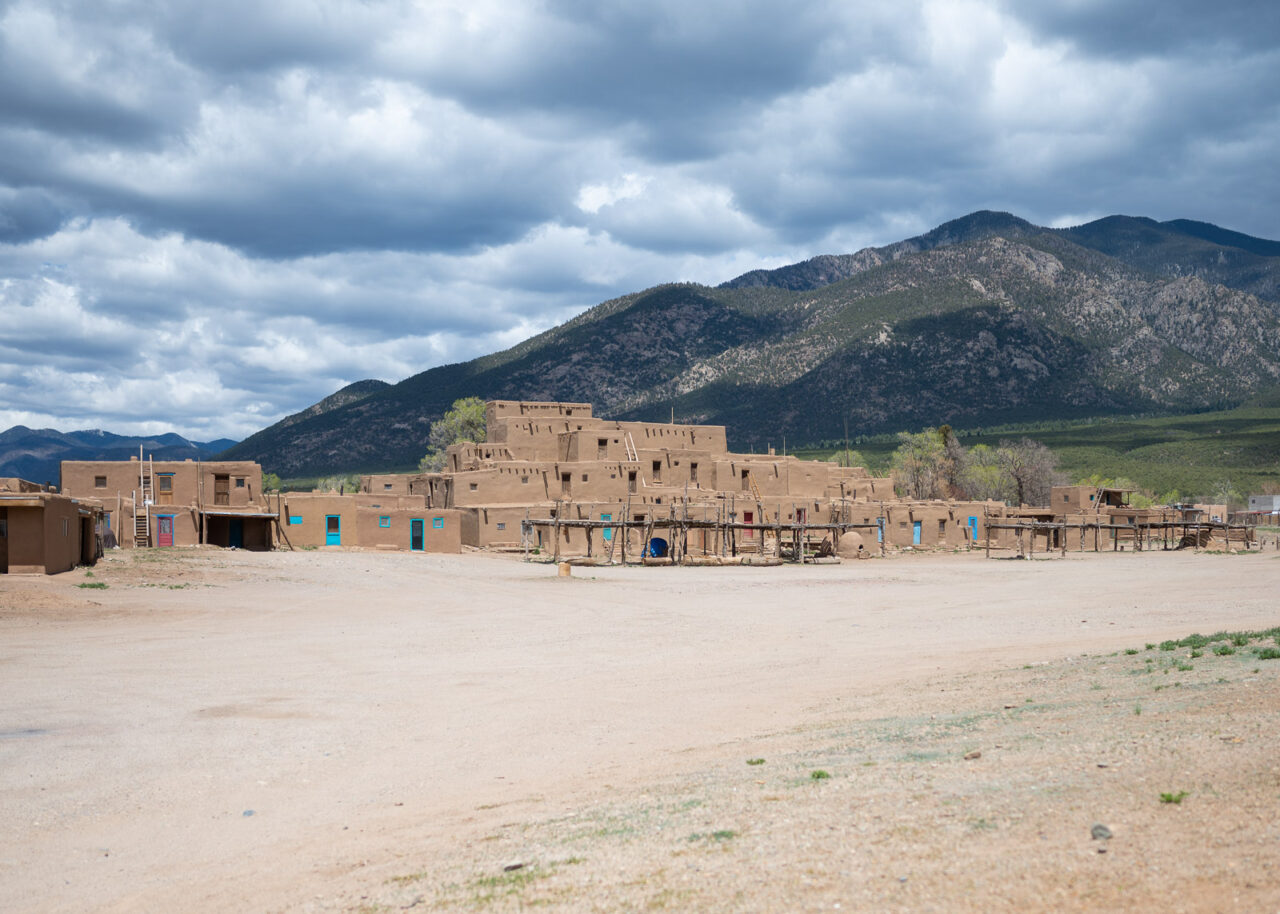
Taos Pueblo is a Native American community consisting of multi-storied adobe buildings that have been continuously inhabited for over 1000 years. The pueblo lies 1 mile north of Taos and is considered to be one of the oldest continuously inhabited communities in the United States.
Since it’s a living tribal community visitors are requested to respect the privacy of the people who live there. You can enter the pueblo and take photos, but you must not take pictures of tribal members without permission. Visitors may only enter homes that are marked as business with clear signage and must always abide by the “Restricted Area” signs. The river and the cemetery are off limits.
Within the pueblo you can buy mica-flecked pottery, silver jewelry, moccasins, boots and drums made by local artisans, as well as contemporary artworks created by the Pueblo’s fine artists.
Taos Pueblo is open Thursday- Monday 9:00 AM – 4:00 PM, closed Tuesday and Wednesday. Entry costs $16 for adults, $14 for seniors and students. Kids under 10 can enter for free.
Taos Plaza
Located in the heart of the downtown area, Taos Historic Plaza is a popular gathering place with trees, benches and a gazebo. The plaza is lined with shops and galleries, and often hosts farmers markets and live music. It dates back to the 18th century, when the King of Spain gave the Don Fernando de Taos Land Grant to 63 families in the Taos area.
Rio Grande Gorge Bridge
Standing 650 feet above the river, the Rio Grande Gorge Bridge is the fifth highest bridge in the United States and the second highest on the US highway system. Constructed in the 1960s, this beautiful steel bridge spans a very deep gorge and has been featured in various Hollywood movies, including Paul, Natural Born Killers, Terminator Salvation, Wild Hogs, and White Sands. It is often dubbed “The Bridge to Nowhere” because funding didn’t exist to continue the road on the other side.
Park your vehicle in the parking lot on the west side of the bridge and follow the walking trail along the rim of the gorge to capture some incredible photos!
Taos Art Museum and Kit Carson & Home Museum
Driving in New Mexico: Tips
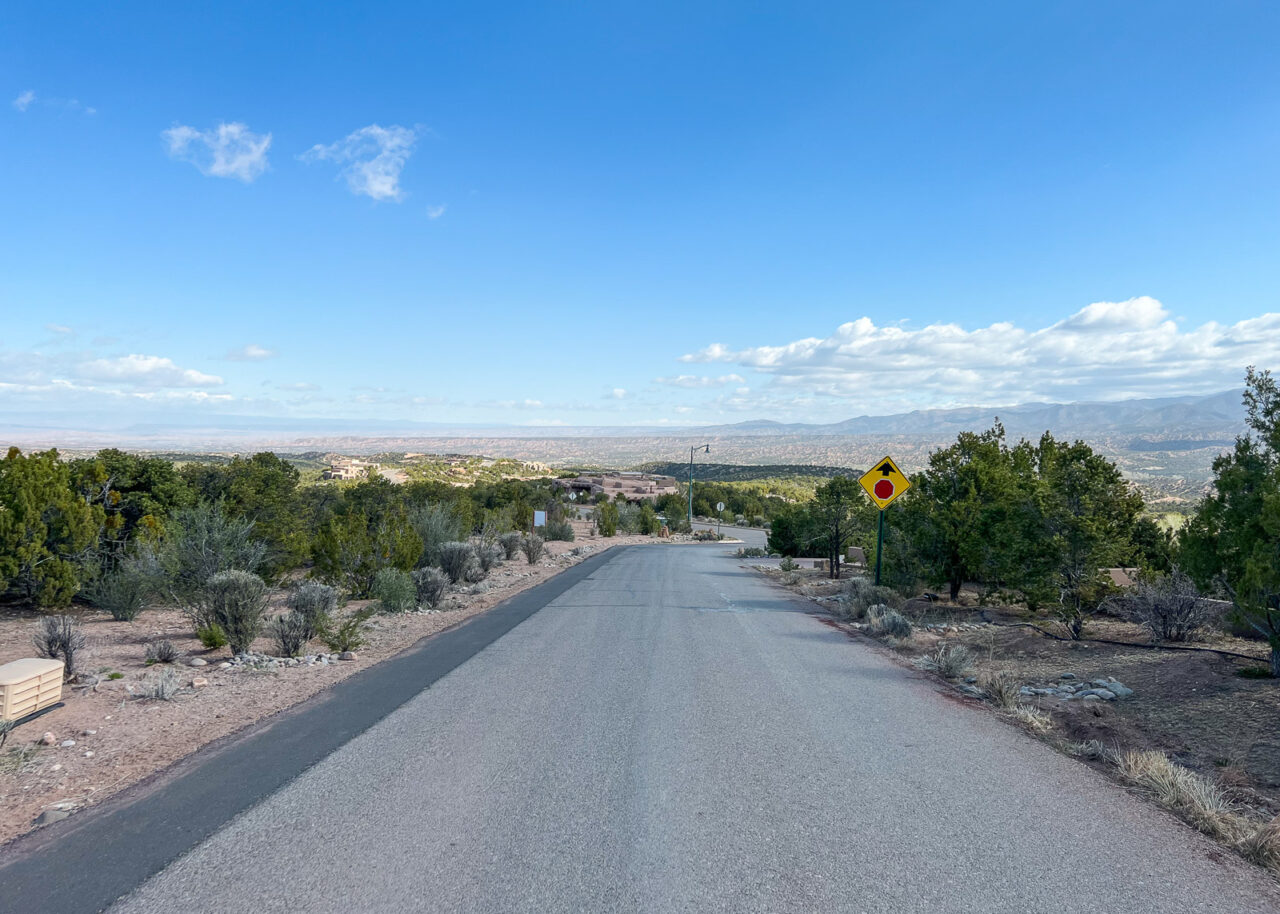
We rented a car from Albuquerque Sunport (airport) for the duration of our Santa Fe trip. Pick up and drop off was a pretty seamless experience and there are numerous car rental companies there, including Enterprise, ACE, Thrifty. To find the best car rental prices I usually use Discover Cars or Rentalcars.com.
Santa Fe also has its own airport but it’s much smaller than Albuquerque and mainly accommodates private aircraft and just a handful of airlines. Airfare to Santa Fe Regional Airport tends to be more expensive, so it’s generally cheaper to fly to Albuquerque and rent a car from there.
The roads in New Mexico were generally pretty empty when we visited. I live in New Jersey where I’m used to busy roads and lots of traffic. Driving in New Mexico was a breeze, however we saw lots of police on the roads in New Mexico. Make sure you observe the speed limit to avoid getting pulled over. The speed limit is 75 mph on rural interstates and usually 55 mph on other roads.
On the last couple of days of our trip there were forest fires out near Jemez Springs and Valles Caldera National Preserve, so several roads were closed. Always check Google Maps as well as the local news for road closures, especially in the hot summer months.
FAQ About Driving the High Road from Santa Fe to Taos
The high road is the most scenic route you can take to Taos. You’ll be able to see beautiful views of the Carson National Forest and the mountains in the distance.
Yes, it’s very pretty. It’s one of the most scenic drives in the US and definitely worth your time. As you drive along the hilly high road, you’ll be met with stunning views of the surrounding mountains and desert landscape.
Santa Fe and Taos are about 70 miles apart from each other.
Taos is worth visiting as it’s home to Taos Pueblo, which is a UNESCO World Heritage Site. The pueblo is made up of multi-storied adobe buildings and is one of the oldest continuously inhabited communities in the United States.
You can definitely do Taos as a day trip, since the drive time is around 1.5-2 hours. However, if you want to stop at multiple towns along the way, you may want to consider stopping the night in Taos and driving back the following day.
It’s better to stay in Santa Fe because there’s a lot more to see and do there than in Taos. Plan to spend around 3 days exploring Santa Fe and then you can either do a day trip to Taos or drive up there and stay the night.
Between Santa Fe and Taos there are lots of towns to discover with some well-preserved examples of Spanish Colonial architecture. Popular stops along the way include Chimayo, Cordova, Truchas, Las Trampas and Rancho de Taos.
There are numerous things to see on the High Road from Santa Fe to Taos. Stop at the Santuario de Chimayó church, a popular pilgrimage site, and the famous San Francisco de Asis Church, which is located at Rancho de Taos.
A Final Word…
The Santa Fe to Taos High Road is one of the most scenic drives I’ve ever taken. We really didn’t do much research about the High Road so I had no idea what to expect. It’s definitely worth renting a car for your Santa Fe trip so you can drive this route and visit Taos Pueblo. Another route worth taking is the Turquoise Trail, which is a scenic byway between Santa Fe and Albuquerque that passes through various mining towns.
[ad_2]
Source link





